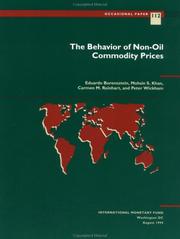| Listing 1 - 2 of 2 |
Sort by
|
Book
ISBN: 3039215795 3039215787 Year: 2019 Publisher: MDPI - Multidisciplinary Digital Publishing Institute
Abstract | Keywords | Export | Availability | Bookmark
 Loading...
Loading...Choose an application
- Reference Manager
- EndNote
- RefWorks (Direct export to RefWorks)
Financial crises are nothing new in the annals of history of the capitalistic path of economic development; indeed, they are part of business cycle. The theoretical basis for this is well entrenched in the concept of ‘Keynesian Cross’. Tales of crises date back centuries, but have taken a new turn as the race for more globalization goes on, which involves liberalizing trade and opening up the financial sector. This has made many nations vulnerable to crises that are likely to be repeated, perhaps frequently. Based on recent experience, warning signs can be seen in the dollar-centric exchange rate, which is the mainstay for the stability of the current global financial system. To a careful observer, there is clearly fatigue in the system.
Special Drawing Rights (SDRs) --- banking crises --- reserve currency --- asymmetry --- derivative --- Asian crisis --- policy uncertainty --- monetary plurality --- mortgage crisis --- nonlinear ARDL --- China --- emerging market economies --- exchange rates --- default swap --- LIBOR --- currency --- cash flow --- Belt and Road Initiative --- money demand --- commodity price stabilisation --- trade balance --- risk management --- Argentina --- RMB internationalization --- GMM --- currency convertibility --- investment --- Grondona system --- exchange rate disconnect puzzle --- monetary policy --- NARDL --- Special Drawing Right --- currency pegs --- international monetary system --- economic institutions --- cointegration --- macroeconomic fundamentals --- currency crisis --- the U.S.A.

ISBN: 1557754128 1455267015 1452705585 9781557754127 Year: 1994 Volume: 112 Publisher: Washington, D.C. : International Monetary Fund,
Abstract | Keywords | Export | Availability | Bookmark
 Loading...
Loading...Choose an application
- Reference Manager
- EndNote
- RefWorks (Direct export to RefWorks)
This paper analyzes global commodity trends and concludes that the marked decline in real commodity prices of the past decade should be regarded as largely permanent and irreversible. The authors contend that the analysis of commodity prices should be extended to include the role of the breakdown of major international commodity agreements. In addition, the authors analyze how developments in the former Soviet Union have affected commodity supply conditions.
National wealth --- Prices --- Government policy --- 338.53 --- -339.56 --- 330.123.72 --- 338.57 --- $?$94/12 --- prix --- politique des prix --- theories des prix --- AA* / International - Internationaal --- 338.013 --- 380.20 --- 338.52 --- 330.05 --- Commercial products --- Commodity prices --- Justum pretium --- Price theory --- Consumption (Economics) --- Cost --- Costs, Industrial --- Money --- Cost and standard of living --- Supply and demand --- Value --- Wages --- Willingness to pay --- Overheidsinvloed op prijsvorming. Prijzenpolitiek van de overheid --- prijzen --- prijsbeleid --- prijstheorieen --- Belang, verdeling en beleid van de natuurlijke rijkdommen. Grondstoffen. --- Prijstheorieën: algemeenheden. --- Working papers --- Prices. --- Government policy. --- 338.53 Overheidsinvloed op prijsvorming. Prijzenpolitiek van de overheid --- 339.56 --- Government price policy --- Wage-price policy --- Belang, verdeling en beleid van de natuurlijke rijkdommen. Grondstoffen --- Prijstheorieën: algemeenheden --- Prices - Government policy --- Investments: Commodities --- Investments: Energy --- Exports and Imports --- Finance: General --- Macroeconomics --- Commodity Markets --- Agriculture: General --- Trade: General --- Metals and Metal Products --- Cement --- Glass --- Ceramics --- Aggregate Factor Income Distribution --- General Financial Markets: General (includes Measurement and Data) --- Investment & securities --- International economics --- Finance --- Agricultural economics --- Commodity price fluctuations --- Commodities --- Commodity price shocks --- Agricultural commodities --- Export earnings --- International trade --- Exports --- Farm produce --- Metals --- Russian Federation
| Listing 1 - 2 of 2 |
Sort by
|

 Search
Search Feedback
Feedback About UniCat
About UniCat  Help
Help News
News